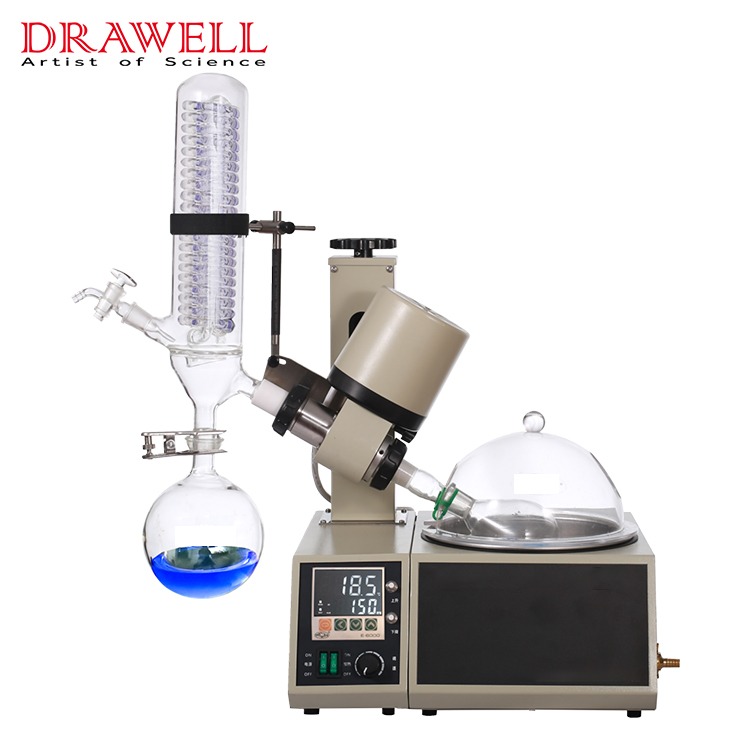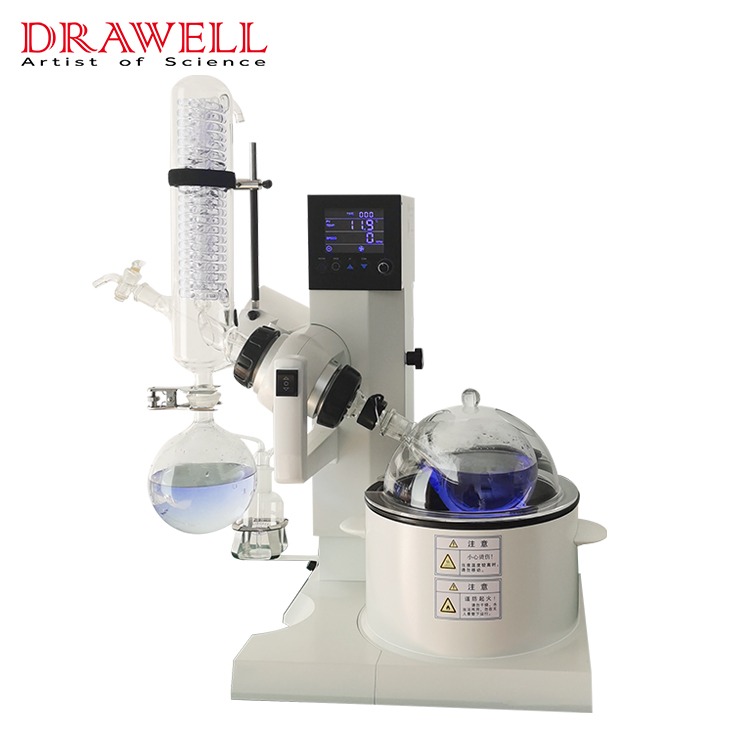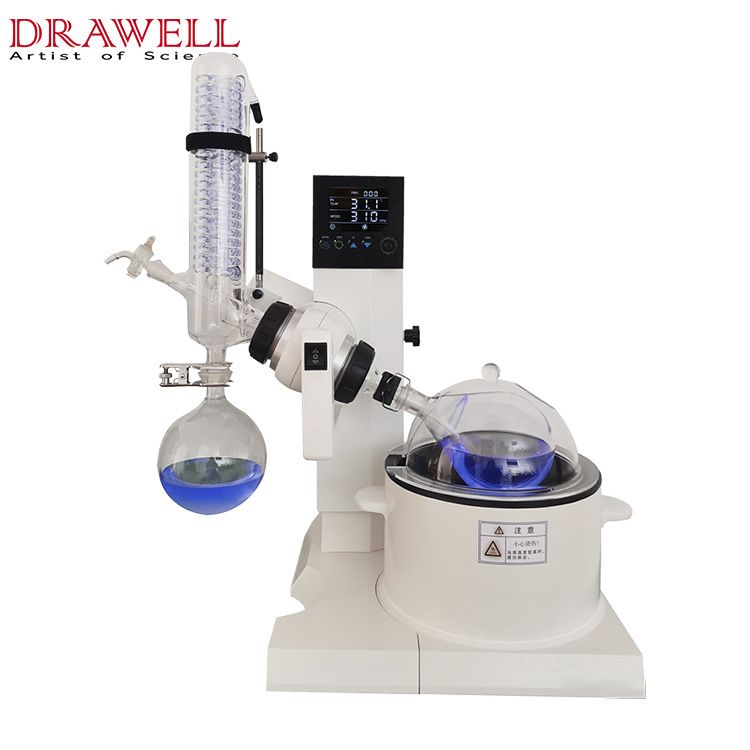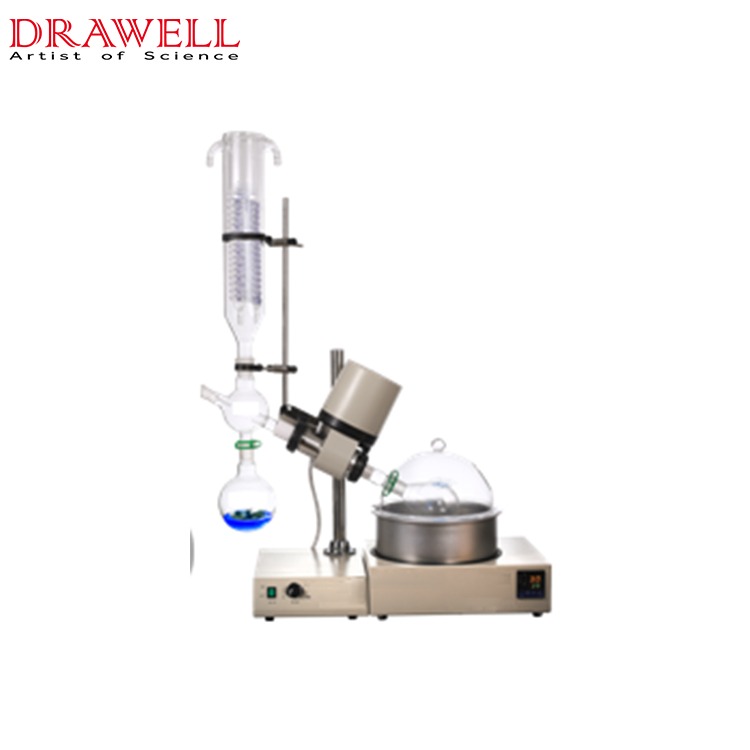Ethanol, the versatile alcohol found in everything from alcoholic beverages to biofuels, plays a crucial role in various industries. Its extraction often involves removing it from solutions using evaporation, and one of the most efficient and effective tools for this task is the rotary evaporator. Here we will talk about the important role of rotary evaporator in ethanol extraction and how to realize ethanol extraction by using rotary evaporator.
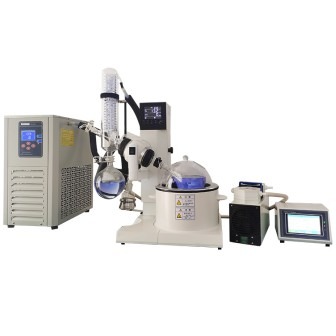
What is a Rotary Evaporator?
A spinning flask connected to a condenser by a sealed joint. This, in essence, is a rotary evaporator. The flask rotates continuously while submerged in a heated water bath, creating a thin film of the solution on its inner walls. A vacuum pump removes air from the system, significantly lowering the boiling point of the solvent (typically ethanol) compared to at atmospheric pressure. This allows the ethanol to evaporate at a much lower temperature, minimizing the risk of degrading heat-sensitive compounds in the extract.
Why Use a Rotary Evaporator for Ethanol Extraction?
Traditional evaporation methods, like open-air boiling, come with several drawbacks:
- Higher evaporation temperatures can damage heat-sensitive compounds in the extract.
- Ethanol loss to the atmosphere can be significant.
- Controlling the evaporation process is difficult, leading to inconsistent results.
The rotary evaporator overcomes these limitations with its key advantages:
- Gentle Evaporation: Lowering the boiling point through reduced pressure protects heat-sensitive compounds.
- Efficient Recovery: The closed system minimizes ethanol loss, maximizing yield.
- Controlled Process: Adjustable rotation speed and vacuum level allow for precise control over evaporation.
- Scalability: Rotary evaporators come in various sizes, catering to small-scale research to large-scale industrial applications.
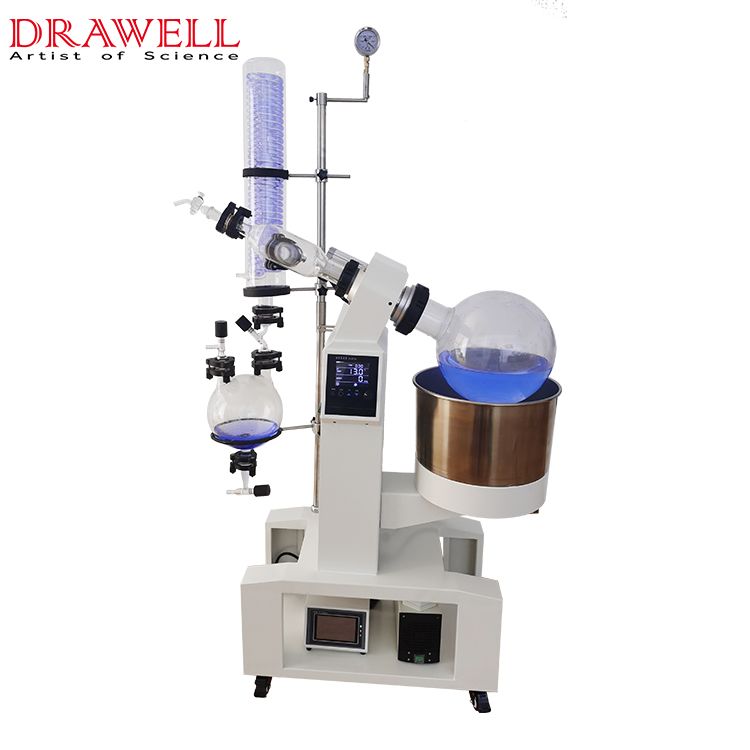
How to Use a Rotary Evaporator for Ethanol Extraction?
In the case of ethanol extraction, rotary evaporator often used to concentrate and purify the extracted material after the initial steeping process. Here’s a general overview of the steps involved in using a rotary evaporator for ethanol extraction:
1. Preparation:
- Assemble the rotary evaporator: Connect the main unit to the water bath, chiller, vacuum pump, and collection flask. Ensure all connections are secure and leak-free.
- Prepare the sample: Transfer the ethanol extract to the rotary evaporator flask. The amount of sample will depend on the capacity of your equipment and the desired concentration of the final extract.
- Set the chiller and water bath temperatures: The chiller temperature should be set to a few degrees below the freezing point of the solvent (ethanol boils at 78.3°C, so aim for around -10°C to -20°C). The water bath temperature should be set slightly higher than the boiling point of the solvent at reduced pressure (around 40°C to 50°C is a good starting point).
2. Evaporation:
- Start the vacuum pump: This will create a vacuum within the system, lowering the boiling point of the ethanol and allowing it to evaporate at a lower temperature.
- Rotate the flask: This helps to spread the sample evenly and promotes efficient evaporation.
- Monitor the process: Watch for the condensed ethanol vapor collecting in the receiving flask. You may need to adjust the water bath temperature or rotation speed as needed.
3. Collection and solvent recovery:
- Once the evaporation is complete: Stop the rotation and vacuum pump. Allow the system to cool down before carefully disconnecting the receiving flask.
- The condensed ethanol will be collected in the receiving flask. You can then reuse this ethanol for future extractions or dispose of it properly according to your local regulations.
- The concentrated extract will remain in the rotary evaporator flask. You can further process this extract depending on your specific needs.
Here are some additional tips for using a rotary evaporator for ethanol extraction:
- Use a bump trap: This will help to prevent bumping and foaming, which can be a problem during evaporation.
- Don’t overload the flask: Overfilling the flask can lead to inefficient evaporation and potential spillage.
- Be careful when handling hot liquids and glassware.
- Always wear appropriate safety gear, such as gloves and eye protection.
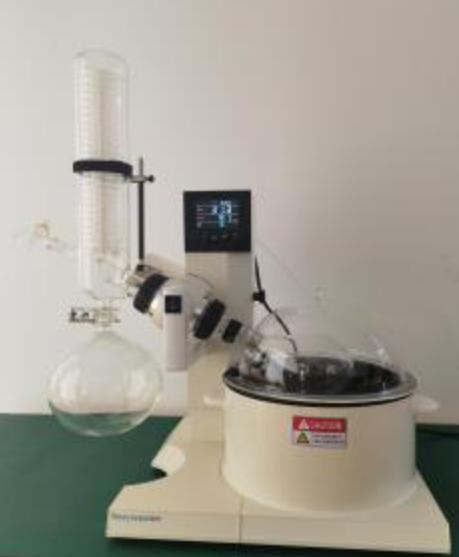
Conclusion
With a little practice and this comprehensive guide under your belt, you’ll be confidently extracting valuable compounds from your starting materials in no time. Remember, patience and safety are key ingredients in any successful rotary evaporator operation. If you’re looking for a reliable and high-quality rotary evaporator, or simply need expert advice on choosing the right one for your needs, consulting a reputable rotary evaporator supplier is your next step. They can guide you through the diverse range of models and configurations, ensuring you find the perfect fit for your specific extraction goals. So, don’t hesitate to contcat Drawell for more informations.

